
The inspiration for the major Apple TV+ series, streaming now!
The riveting history of the American Eighth Air Force in World War II and the young men who flew the bombers that helped beat the Nazis and liberate Europe, brilliantly told by historian and World War II expert Donald L. Miller. The Masters of the Air streaming series stars Austin Butler and Callum Turner, and is produced by Tom Hanks and Steven Spielberg, the legendary duo behind Band of Brothers and The Pacific.
Masters of the Air is the deeply personal story of the American bomber boys in World War II who brought the war to Hitler’s doorstep. With the narrative power of fiction, Donald Miller takes you on a harrowing ride through the fire-filled skies over Berlin, Hanover, and Dresden and describes the terrible cost of bombing for the German people. Masters of the Air is the deeply personal story of the American bomber boys in World War II who brought the war to Hitler’s doorstep. With the narrative power of fiction, Donald Miller takes you on a harrowing ride through the fire-filled skies over Berlin, Hanover, and Dresden and describes the terrible cost of bombing for the German people.
Fighting at 25,000 feet in thin, freezing air that no warriors had ever encountered before, bomber crews battled new kinds of assaults on body and mind. Air combat was deadly but intermittent: periods of inactivity and anxiety were followed by short bursts of fire and fear. Unlike infantrymen, bomber boys slept on clean sheets, drank beer in local pubs, and danced to the swing music of Glenn Miller’s Air Force band, which toured US air bases in England. But they had a much greater chance of dying than ground soldiers.
The bomber crews were an elite group of warriors who were a microcosm of America—white America, anyway. The actor Jimmy Stewart was a bomber boy, and so was the “King of Hollywood,” Clark Gable. And the air war was filmed by Oscar-winning director William Wyler and covered by reporters like Andy Rooney and Walter Cronkite, all of whom flew combat missions with the men. The Anglo-American bombing campaign against Nazi Germany was the longest military campaign of World War II, a war within a war. Until Allied soldiers crossed into Germany in the final months of the war, it was the only battle fought inside the German homeland.
Masters of the Air is “a stunning achievement” (David McCullough), “a fresh new account” (Walter Boyne, former director of the Smithsonian Air and Space Museum) of life in wartime England and in the German prison camps, where tens of thousands of airmen spent part of the war. It ends with a vivid description of the grisly hunger marches captured airmen were forced to make near the end of the war through the country their bombs destroyed.
Drawn from recent interviews, oral histories, and American, British, German, and other archives, Masters of the Air is an authoritative, deeply moving account that “accurately and comprehensively” (Lt. Gen. Bernard E. Trainor, USMC (Ret.) and coauthor of Cobra II) tells of the world’s first and only bomber war.
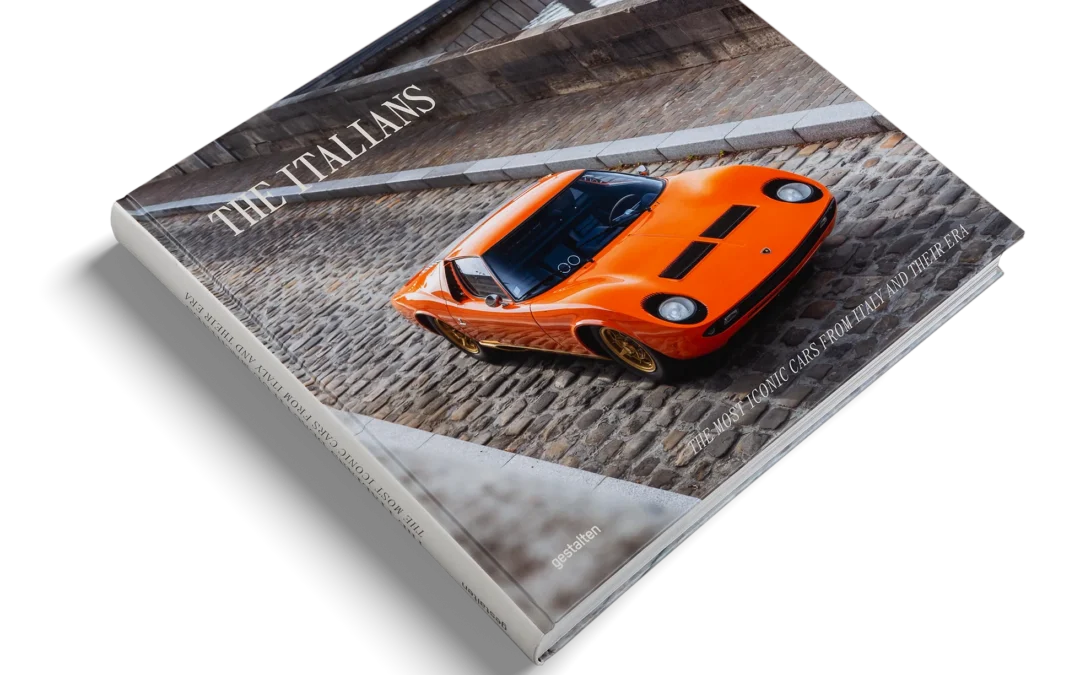
Italy is the homeland of “La Bella Macchina” and the cradle of automotive culture. This book celebrates the most iconic cars and visionary designers from the peninsula.
This stunningly illustrated book takes readers on a journey through the history of Italian automotive design, showcasing some of the most iconic and beloved models from the 1920s to the early 2000s.
Delving deep into the craftsmanship and artistry of vintage automobiles, this book explores how Italian car design has been at the center of technology, culture,and creativity—and how Italian designers like Pininfarina, Zagato, Bertone, Giugiaro, Gandini, and Ghia have influenced international car designs and brands.
With striking archival and contemporary images, The Italians – Beautiful Machines reveals the fascinating stories behind some of the most famous cars from Italy and what makes them so desirable. This book uses the lens of automotive design to chart the evolution of culture over the last 100 years. The Italians – Beautiful Machines is an impactful celebration of Italian car design and its lasting influence on design and culture.
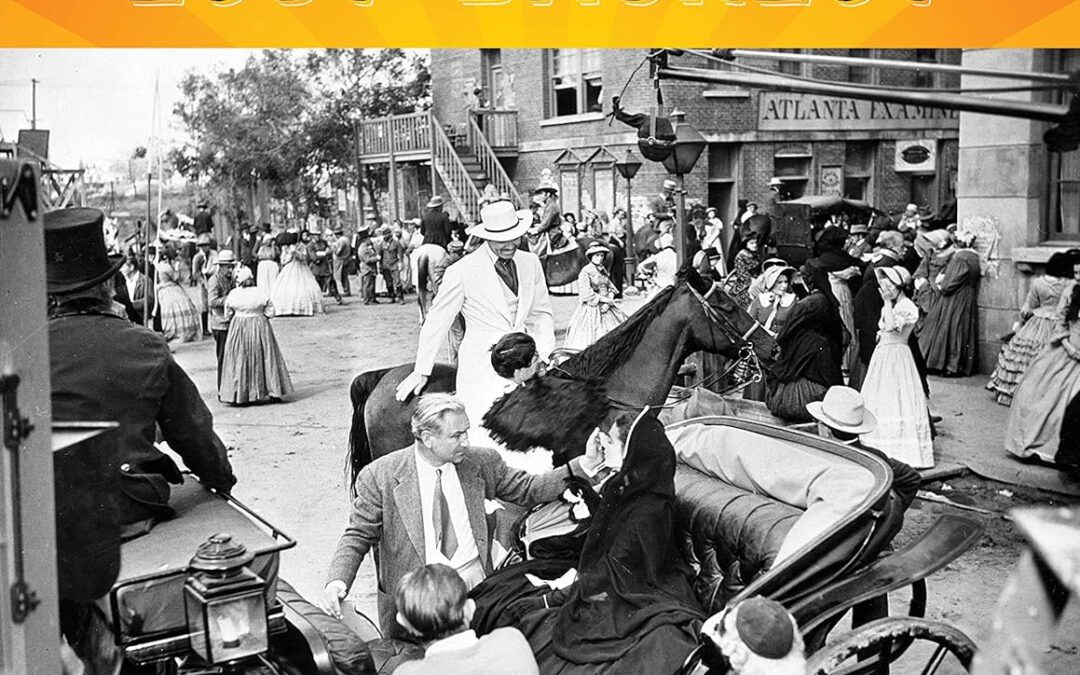
Hollywood is a transitory place. Stars and studios rise and fall. Genres and careers wax and wane. Movies and movie moguls and movie makers and movie palaces are acclaimed and patronized and loved and beloved, and then forgotten. And yet…
And yet one place in Southern California, built in the 1920s by (allegedly murdered) producer Thomas Ince, acquired by Cecil B. DeMille, now occupied by Amazon.com, has been the home for hundreds of the most iconic and legendary films and television shows in the world for a remarkable and star-studded fifty years. This bizarre, magical place was the location for Tara in Gone with The Wind, the home of King Kong and Superman, of Tarzan and Batman, of the Green Hornet, of Elliot Ness, of Barney Fife, of Tarzan, of Rebecca, of Citizen Kane, of Hogan’s Heroes and Gomer Pyle, of Lassie, of A Star is Born and Star Trek, and at least twice, of Jesus Christ. For decades, every conceivable star in Hollywood, from Clark Gable to Warren Beatty, worked and loved and gave indelible performances on the site.
And yet, today, it is completely forgotten.
Pretty much anyone alive today, from college professors to longshoremen, have probably heard of Paramount and of MGM, of Warner Bros. and of Universal, and of Disney and Fox and Columbia, but the place where many of these studio’s beloved classics were minted is today as mysterious and unknowable as the sphinx.
Hollywood’s Lost Backlot: 40 Acres of Glamour and Mystery will, for the first time ever, unwind the colorful and convoluted threads that make for the tale of one of the most influential and photographed places in the world. A place which most have visited, at least on screen, and which has contributed significantly and unexpectedly to the world’s popular culture, and yet which few people today, paradoxically, have ever heard of.
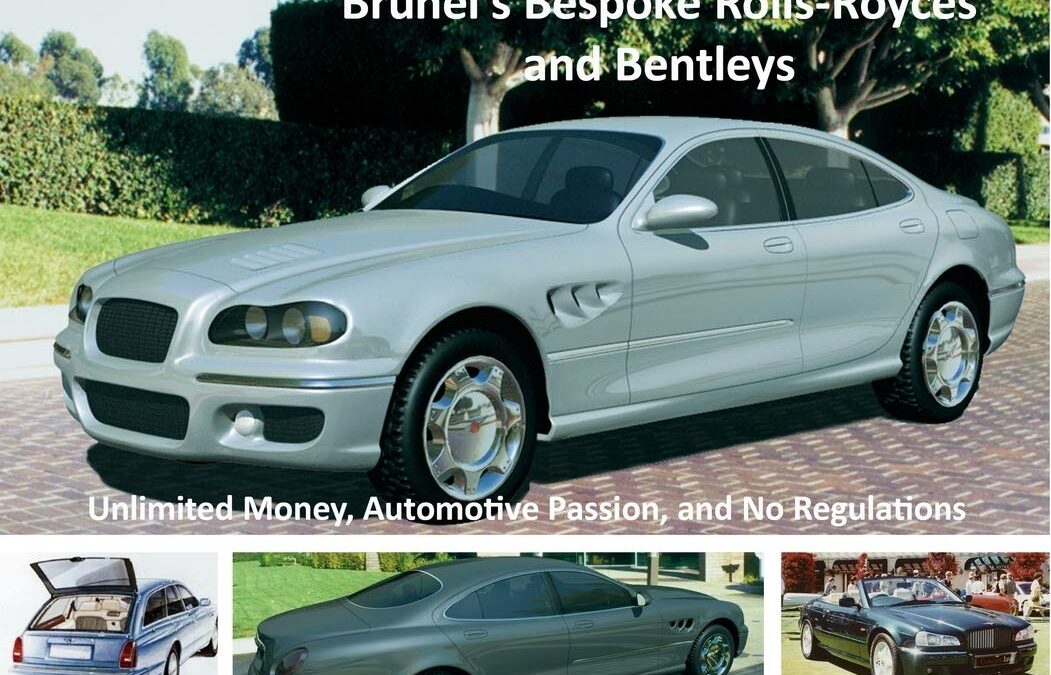
Few publications have gone into any great detail about the secretive collection of coachbuilt Rolls-Royce motorcars and Bentleys commissioned by Sultan Hassanal Bolkiah and his brother, Prince Jeffri, of Brunei. The Sultan, often described as the world’s richest man in the 1990s, has become a living legend for being the one person who has lived the dream that all car enthusiasts have; having the wherewithal to turn his dreams into reality, be it with cars, planes, or homes. More importantly, besides having the money to achieve his automotive dreams, he controlled all of the laws and vehicle regulations in his country. This meant that he didn’t have to comply with the pesky regulations and safety laws that effectively ended the coachbuilding business elsewhere in the world, even for the ultra-rich. This book delves into all of the information that is known about these spectacular motorcars.

Bunker Hill is the highest point of downtown Los Angeles, both literally and figuratively. Its circle of life has created a continuous saga of change, each chapter rich with captivating characters, structures, and culture. In Bunker Hill Los Angeles: Essence of Sunshine and Noir, historian Nathan Marsak tells the story of the Hill, from the district’s inception in the mid-19th century to its present day. Once home to wealthy Angelenos living in LA’s “first suburb,” then the epicenter of the city’s shifting demographics and the shadow and vice of an urban underbelly, Bunker Hill survived its attempted erasure and burgeoned as a hub of arts, politics, business, and tourism.
As compelling as the story of the destruction of Bunker Hill is―with all the good intentions and bad results endemic to city politics―it was its people who made the Hill at once desirable and undesirable. Marsak commemorates the poets and writers, artists and activists, little guys and big guys, and of course, the many architects who built and rebuilt the community on the Hill―time after historic time.
Any fan of American architecture will treasure Marsak’s analysis of buildings that have crowned the Hill: the exuberance of Victorian shingle and spindlework, from Mission to Modern, from Queen Anne to Frank Gehry, Bunker Hill has been home to it all, the ever-changing built environment.
With more than 250 photographs―many in color―as well as maps and vintage ephemera to tell his dramatic visual story, Marsak lures us into Bunker Hill Los Angeles and shares its lost world, then guides us to its new one.

Gorgeously illustrated with NASA photography, the large-format (12 × 12 inches) NASA Missions to Mars examines everything from the first tentative steps toward the fourth planet to the 2021 landing of rover Perseverance and beyond.
Space exploration has always been about pushing boundaries, but perhaps the achievement which has most piqued a sense of possibility has been the exploration of Mars. Beginning with Soviet and American flybys in the early 1960s that were part and parcel of the Space Race, acclaimed space historian Piers Bizony continues through complete coverage of the Viking 1 and 2 missions of 1975–1976. Bizony also traces NASA’s acclaimed rover program, describing the development, technologies, mission histories, and achievements of the rovers Sojourner, Opportunity, Spirit, and Curiosity—all on the 25th anniversary of their first landing.
This awe-inspiring book features:
- An engaging and complete history of Mars exploration
- A treasure trove of imagery from the NASA archives, including photos and cartography beamed home, artworks and concept drawings created during development phases, as well as photography created to document testing phases
- A glimpse of future plans for Mars exploration and habitation
- Coverage of orbiters sent to the red planet by not only NASA but by space agencies from Russia, India, Japan, Europe, China, and the UAE
- A two-sided 24-inch gatefold
Humankind’s fascination with Mars can be traced back to prewar science fiction. While the billions of dollars and ingenious innovations have allowed us incredible views from more than 51 million miles away, no less incredible are the insights these missions, hardware, and scientists have provided into our universe—and our own planet. NASA Missions to Mars is your complete illustrated history of those efforts and a necessary volume for the bookshelf of any space enthusiast!
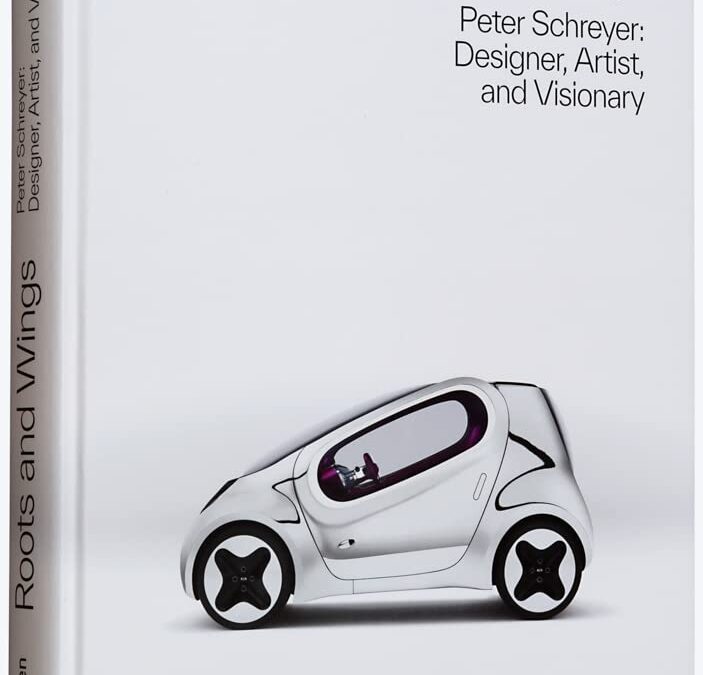
Roots and Wings explores the life and work of Peter Schreyer, one of the most influential car designers of our time. A Renaissance man with an eye for detail and foresight for innovation, he geared himself toward success. Responsible for the births of some of the 20th-century’s most iconic cars, his industry experience brought instant classics to the road. From humble beginnings in Germany’s divided south to his new base in Seoul, Schreyer embodies a conduit between the west and east―bridging his homeland’s history of automotive design with South Korea, a country that has experienced stratospheric growth on the world stage in just a few decades. Looking at the formative moments and pivotal artistic discoveries that shaped his creative mindset, Roots and Wings is the never-before-told story of how a man reimagined a car brand and left a mark on history in the process.
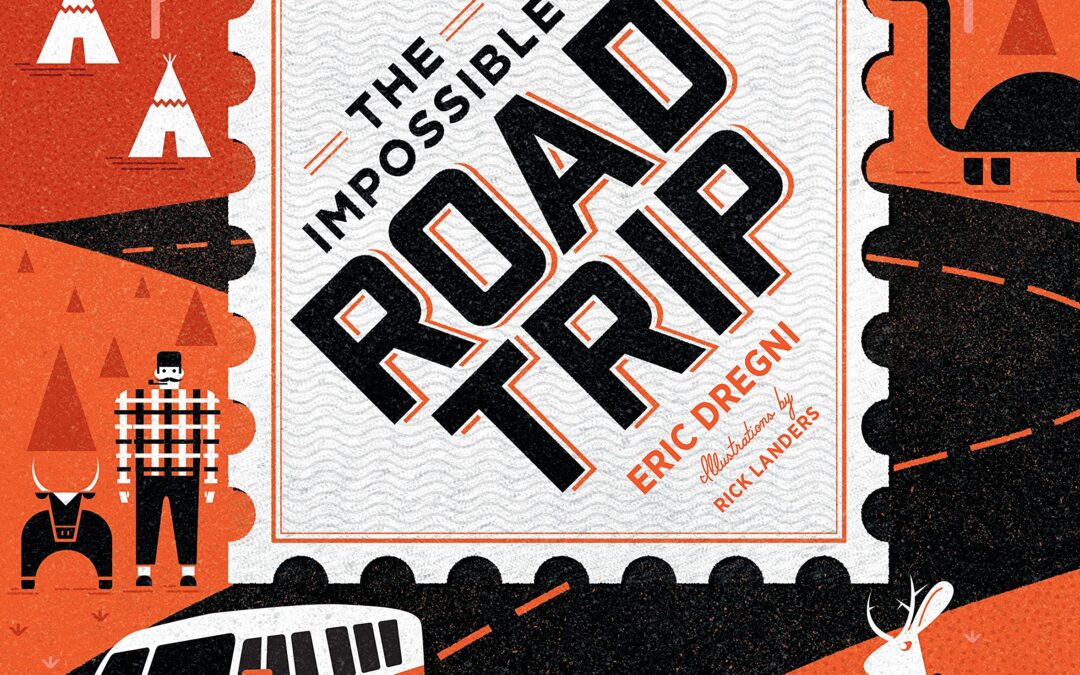
Filled with color photography, entertaining site descriptions and histories, and five unique infographic map illustrations, The Impossible Road Trip is your ultimate look back at America’s most famous—and quirkiest—roadside attractions, past and present.
The great American road trip is back. With its advantages for your health, budget, and the environment, now is the time to plan the road trip you have always dreamed of taking.
Following in the great tradition of the mid-century golden age of car travel, join the new wave of road warriors with a targeted itinerary chosen from the 150 roadside attractions explored in this colorful guide. From famous to quirky and covering all 50 states, author Eric Dregni gives you an unprecedented look at the breadth of roadside attractions in the US, illustrated in part by the photography of architectural critic and photographer John Margolies (1940–2016). Specially commissioned infographic map illustrations capture the spirit of mid-century automobile travel.
Each site depicted is accompanied by a lively and insightful history and color imagery. From autumnal New England to the gothic South, from the homey Midwest to the great expanses of the Desert Southwest, the dizzying heights of the Rocky Mountains, and the breathtaking Pacific Coast, The Impossible Road Trip encompasses it all:
- Neon-shrouded motels
- Mimetic architecture
- Tourist traps
- Roadside sculpture
- And much more
You’ll see sites both famous and esoteric, including the Cardiff Giant in Cooperstown, New York; the five-story Haines Shoe House in York, Pennsylvania; Solomon’s Castle in Florida; the world’s largest fish in Hayward, Wisconsin; one of several Paul Bunyan statues; Bob’s Big Boy in Burbank, California; and so many more.
With The Impossible Road Trip in hand, set out to discover the nation’s oft-overlooked nooks and crannies.
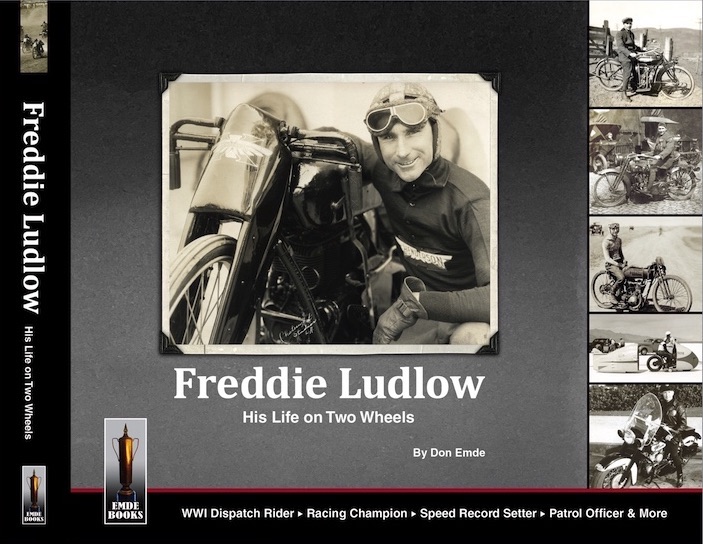
HOT OFF THE PRESS!
Freddie Ludlow. His Life on Two Wheels, by Don Emde
Back in 2020, The Speed Kings. The Rise & Fall of Motordrome Racing, by Don Emde, received the Best Book of the Year award by the Motor Press Guild. Now, you can be among the first to own a copy of his latest book, Freddie Ludlow. His Life on Two Wheels. Available now!
The seeds of the idea for this book were planted over twenty years ago when author Don Emde was entrusted with the care and ownership of a scrapbook of Freddie Ludlow, an early day motorcycle pioneer. With nearly 100 pages of the scrapbook photos organized chronologically with Ludlow’s own handwritten captions, what was obvious was that he was a man of adventure and competitive spirit, who also answered the call to serve his country.
Freddie Ludlow’s motorcycling life began as a delivery boy for Western Union on the streets of downtown Los Angeles around 1910. Local competitions followed until he enlisted in the Army and put his motorcycling experiences as a rider and mechanic to use in Europe during World War I. Upon his return home, Ludlow became one of the top motorcycle racers in the United States, rising to the level of National Champion in 1921. A few years later, his sense of service again saw him finding ways to put motorcycles to good use when he became a motor patrol officer in Pasadena, California, a job that he would have for the next thirty years.
His new “day job” didn’t mean, though, that Freddie was done raising the bar in the motorcycle sport when it came to speed and performance. Through the 1920s and ‘30s, he set numerous speed records on the hard packed sand at Daytona Beach, Florida; on the Bonneville Salt Flats, even along a stretch of public road near San Bernardino, California.
Freddie Ludlow died in 1983, but his amazing motorcycling life lives on in Freddie Ludlow. His Life on Two Wheels. It features not only his scrapbook pages but also many pages written by Don Emde filled with back stories and additional rare and historic photographs of Ludlow and many other legendary racers who were his competitors.
176 pages – Hardbound – 10 x 12 inches
Highly illustrated – 400+ photos and related images
Printed in sepia-tone throughout with retouched black & white photos from Freddie Ludlow’s scrapbook pages, plus some limited color images.
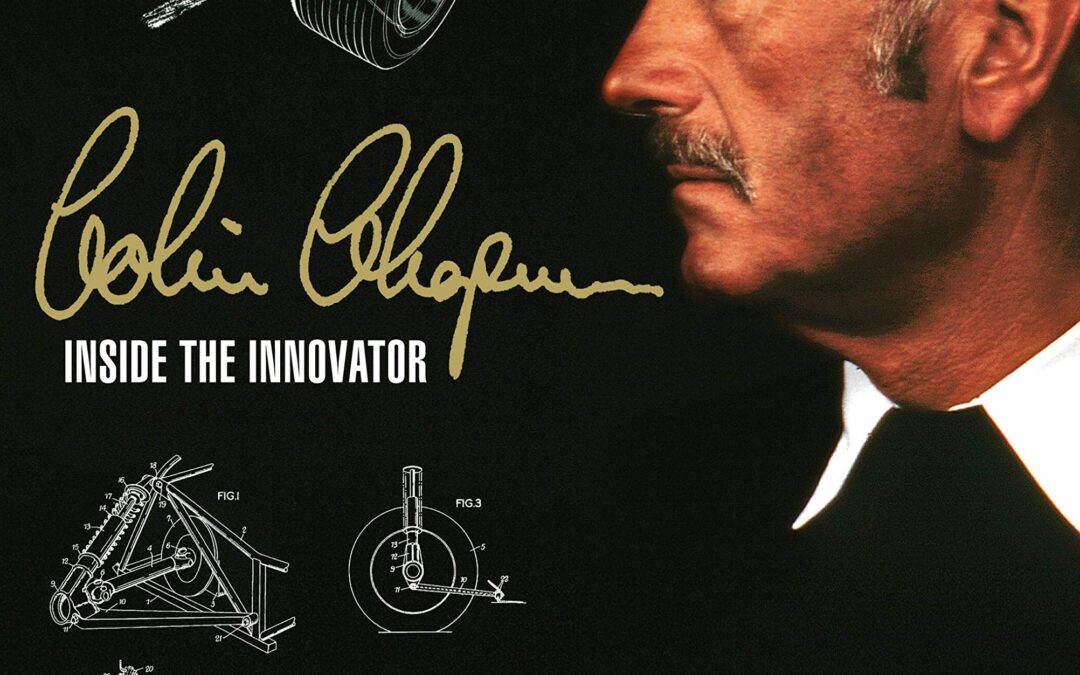
Renowned as one of the greatest creative forces in the world of the automobile, Lotus’s Colin Chapman (1928–82) left a mixed legacy. Was he an unparalleled innovator or an uninhibited exploiter of the uncredited ideas of others? In this landmark book, celebrated author Karl Ludvigsen gets to grips with the legend, digging deep beneath the skin of Chapman and his cars to explore and expose the motivations that drove this mercurial and controversial genius. Interviews with key figures in the Chapman story mesh with information from the author’s extensive archives to make this book a unique and compelling encounter between the engineer-innovator and the historian-investigator.
- Conceiving concepts: assessment of the man whom Keith Duckworth described as ‘the most brilliant conceptual engineer I’ve known’.
- Engine enterprise: recognising that he was, in his words, ‘not an engine man’, Chapman made the best of engines available to him, whether Ford 1172 side-valve, BRM H-16, Cosworth DFV V8 or Pratt & Whitney gas turbine.
- Transmission topics: this chapter moves through Lotus-designed ‘Queerbox’ transaxles, four-wheel drive, automatic clutch actuation and much more.
- Suspension sagas: from makeshift suspension ingenuity on his first Austin-based special to espousal of active suspension just before his death, Chapman gained and exploited an advanced understanding of a car’s underpinnings.
- Structure stories: Chapman’s accomplishments in this field are numerous. Best-known among them are his monocoque innovations, in glass-fibre for the Elite road car and aluminium for the F1 Type 25.
- Whittling weight: obsession with lightness was a Chapman mantra throughout his life. It contributed hugely to the success of his cars, occasionally at an expense of strength and safety that scared off some drivers.
- Aerodynamic adventures: Chapman enjoyed aerodynamics — ‘a very absorbing subject’ — and was at the forefront of major F1 developments in this area.
- Discovering downforce: early insights with wings and wedge-shaped bodies, exemplified by his Types 56 (Indycar) and 72 (F1), led ultimately to the pioneering breakthrough of traction-enhancing ground effect, which reached full flowering with the F1 Lotus 79.
- Ludvigsen gives special attention to Chapman’s exploits at Indianapolis, where he and his cars transformed the nature of America’s premier race with stunning innovations far from the safety of home.
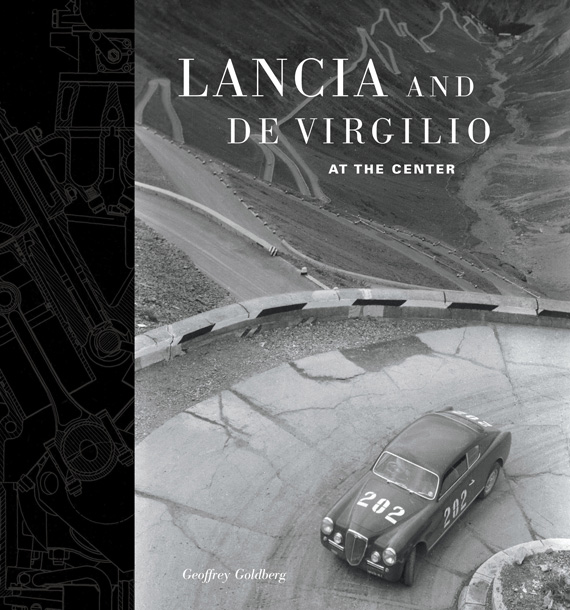
In the years following the Second World War, Lancia was the most innovative automotive company in Italy, if not in the world. The Lancia cars were technically advanced, with an elegant and competitive design on the track. For more than four decades, Francesco de Virgilio was one of the primary figures in the history of Lancia. De Virgilio entered the company as a young engineer in 1939, becoming a member of the Lancia family, when he married the niece of the founder Vincenzo Lancia, in 1947. In Lancia and de Virgilio, the author Geoffrey Goldberg examines the life and career of De Virgilio from multiple perspectives. Drawing on a large number of original documents, technical drawings and photographs from the archives of the De Virgilio family, Goldberg reveals the essential role of De Virgilio in the projects that defined Lancia during its best years in the 1940s and 50s. These include the development of the first production V6 engine, launching and improvement of the Lancia Aurelia, and the management of the short racing program of the company, which produced the classic D50 Formula One car. In addition to engineering and competitions, De Virgilio was directly involved in the events that effected the management and position of Lancia in the Italian automotive industry. In 1955, the family released its control of the company, leading to its eventual acquisition by Fiat in 1969. Through all these upheavals, De Virgilio continued to experiment and innovate, working on multiple projects, from diesel engines for trucks to the first versions of the rally car Stratos in the 1970s. Whatever the assignment, his persistent search for excellence remained a constant element defining Lancia, up to his departure from the company in 1975. Despite his technical successes and his popularity within the company, De Virgil’s contributions have been widely neglected to date.
Produced with the support of the RevS Institute for Automotive Research, Lancia and de Virgilio is the product of more than six years of meticulous research. The book is illustrated with hundreds of unpublished photographs that depict the images of Francesco de Virgilio at work, on the track and at home with his family, as well as dozens of drawings, projects and other finds. In addition to this abundance of details and information, the book, also captures the vibrant spirit of Italian, culture and society during the post-war period. Lancia and de Virgilio provides unique insight into both automotive and social history. The book was greatly appreciated by enthusiasts: it won several awards, including the Cugnot Award of the Society of Auto Historians for the best book of the year. It was also reviewed by the New York Times and the Republic, a rather exceptional event for a book on a company and its history already seventy years in the past.
This limited edition reprint is an opportunity not to be missed for those who did not secure the first edition in 2014.
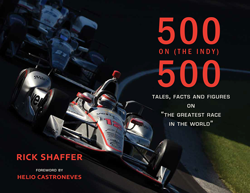
- Why is the Indianapolis Motor Speedway 2.5 miles around instead of five miles?
- Who was an Indy race winner before Ray Harroun?
- What driver had to take a streetcar home to inform his parents he had just won the Indy 500?
- How was the starting lineup determined in the years before the cars were qualified?
- Have there always been 33 starters?
Whether the distant past or modern times serves as a lure for “The Greatest Race in the World,” there are literally hundreds of fascinating, true Indy 500 tales, facts and figures.
One of the race’s most-respected journalists, Rick Shaffer, has gathered 500 of the most interesting anecdotes to come out of the intersection of 16th Street and Georgetown Road.
500 on (the Indy) 500 chronicles the famous from Chevrolet to Andretti, the obscure from William Borque (item #10, the track’s first driver fatality) to Simon Pagenaud (#496), winner 105 years after the last Frenchman to do so.
The ultimate race chronology, this book is for the curious, the scholar, the passing fan or the diehard. The depth of research is sure to entertain and illuminate aspects of the Indy 500 new to even many Indy devotees.
Hard cover, 200 color and B&W images, 280 pages.
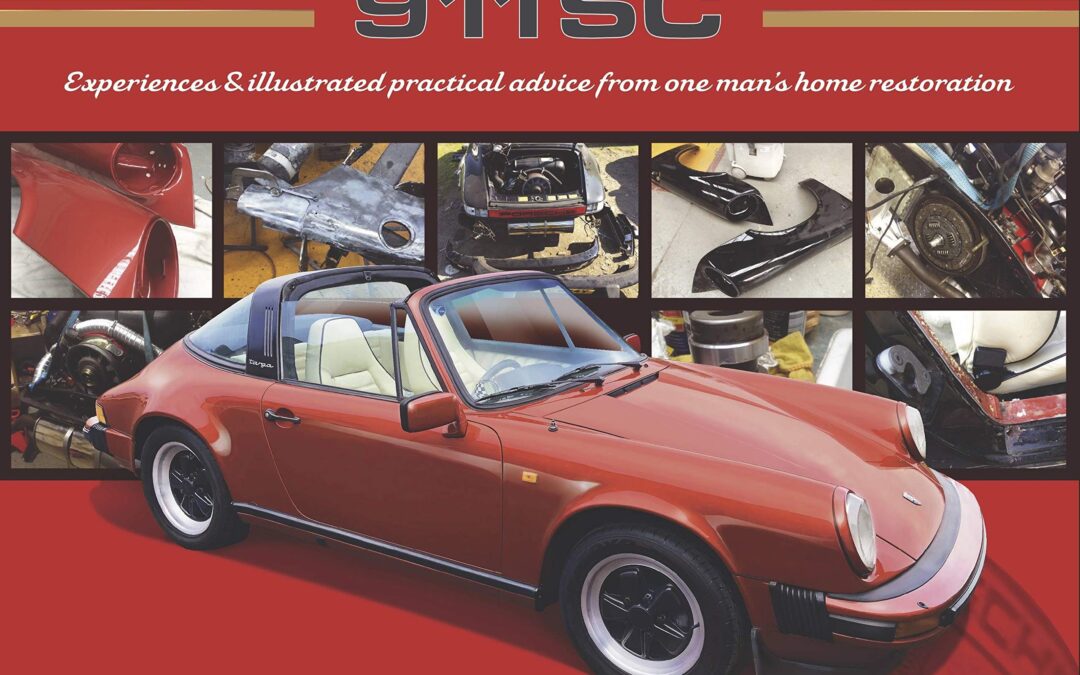
Have you longed to restore a classic Porsche 911, but were either overwhelmed by the scale of the task, or simply unsure of what was involved? This unique publication brings that experience to life, covering every detail of the loving restoration of a very special 1983 Porsche 911 SC Targa Sport. The car was originally a special order model for Sir Cliff Richard.
With the assistance of official Porsche illustrations and Porsche part numbers, the reader is led through the painstaking record of this journey by an enthusiast with an eye for detail and a determination to bring this car back to its former glory. High-quality images and drawings add a further unique perspective to each of the projects undertaken, showing that restoration of these sought-after cars is completely possible for a dedicated enthusiast.
Andrew Clusker has a wide experience in various generations of air-cooled Porsche 911, and recently had a car showcased at Porsche 70th birthday celebrations.
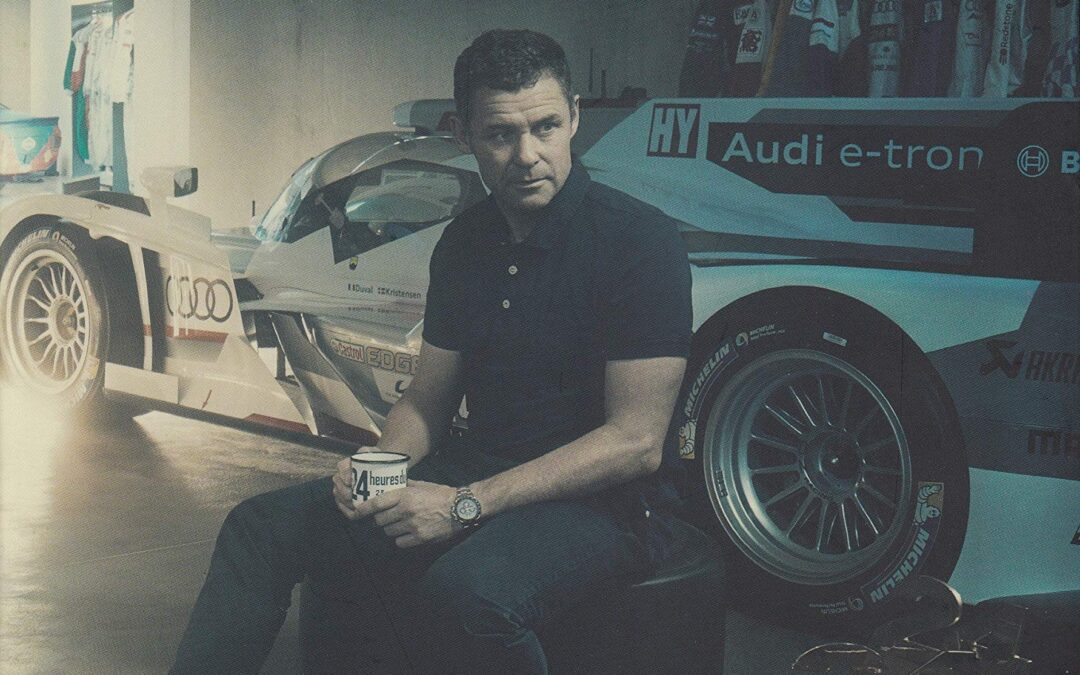
Between 1997 and 2014, Tom Kristensen won the world’s toughest motor race, the Le Mans 24 Hours, a record nine times and finished on the podium on five more occasions. Every time his car made it to the finish, in fact, he was in the top three. It is no wonder that this great sports car driver is known as ‘Mr Le Mans’ to motorsport fans around the world.
Now retired from racing, Kristensen shares in this book his deepest personal reflections and insights from inside and outside the cockpit. He looks back on more than 30 years spent striving for perfection in racing and tells of the battles and setbacks that sometimes seemed impossible to overcome, including a terrible accident in 2007.
- Climbing the racing ladder, from karting into Formula 3 single-seaters, including championship titles in Germany (1991) and Japan (1993), then Formula 3000 and a Formula 1 testing role with Tyrrell.
- Winning as an underdog on his first visit to Le Mans, in 1997 driving an elderly Joest-run privateer Porsche in which he impressed all onlookers with a night-time charge to vanquish Porsche’s factory-entered favourite.
- His second Le Mans victory came in 2000 on his maiden drive for Audi in the R8, a car that was to become all-conquering.
- Kristensen won the next five editions of Le Mans, four times with Audi and once with Bentley (in 2003), his last victory in this sequence taking him past Jacky Ickx’s previous record at the Circuit de la Sarthe.
- His eighth win came in one of the all-time classic contests at Le Mans, in 2008, a rollercoaster of a race in which his ageing diesel-powered Audi was never expected to beat the fancied works Peugeots.
- One more victory with Audi in 2013 sealed his reputation as a true legend of Le Mans.
- His story includes exploits at other racetracks all over the world, none more prolific than Sebring, home of America’s long-established classic endurance race that Kristensen won six times.
- Personal reflections together with contributions from notable observers — including English journalists Gary Watkins and Charles Bradley — complete a truly rounded portrait of the man and his achievements.
Voted ‘Sports Book of the Year’ when originally published in Kristensen’s native Denmark, this thoughtful memoir is now available in English.
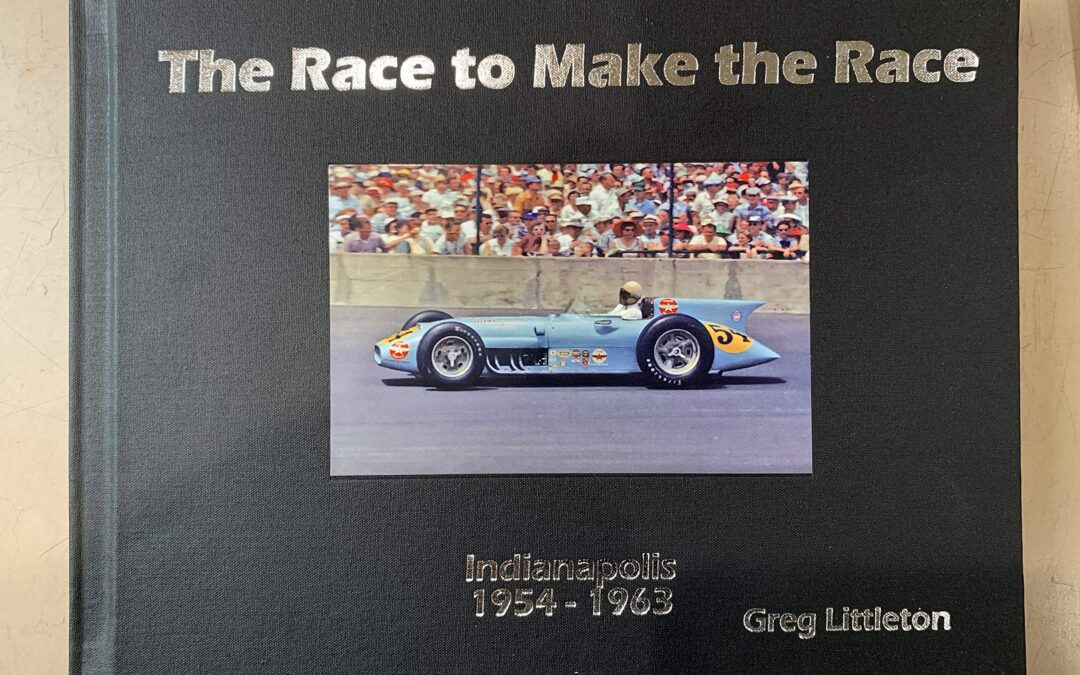
SIGNED
In his new book “The Race to Make the Race” Littleton chronicles a 10-year span (1954-1963) which was the peak roadster years at Indy and records what went on for every qualification attempt during this time period and each lap speed even if the attempt was yellow flagged. There is no mention of the races themselves as those results have been well-documented over the years.
Today’s 500 is lucky to attract 33 cars some years, but there was a time when the 500 really did have an actual Month of May and sometimes more cars went home than made the starting fields. Littleton’s book records by the actual time of day, weather conditions, attendance and all of the other happenings both on the track and in the Garage Area.
There are a lot of details in the book that you will never see anywhere else today. During the years in question the drama around the efforts to find speed just to qualify were often nearly as interesting as the actual race.
“While I was doing the Roadsters book I got the idea about doing a book on qualifications for the Indy 500,” said Littleton. “I got some qualifying information from the Speedway records when I was doing my first book. It was fun to do. I wanted to give the story on the successes and struggles each driver went through to try and make the Indianapolis 500 those years. The Bartholomew County Library was a big help in assisting me. They were able to get the microfilms from the Indiana State Library. I probably made 75 trips down to the local library to gather the information I needed.”
Littleton also mentioned two of the area’s standout racers at Indianapolis. Larry Crockett of Columbus who was the fastest rookie qualifier in 1954 and in the 500-mile race that year he ended up being the top finishing rookie over Pat O’Connor of North Vernon.
Littleton said Crockett, who died in a racing accident in Pennsylvania in 1955 right before he would have attempted to make his second Indianapolis 500, would have been a candidate to win the Indy 500.
“He was so young when he was starting out,” he said. “Nobody knows how his career would have turned out. If he had three or four years on him then I could have given you a better estimate on him. He was fast enough. There were some brave souls in 1954 and they said Larry Crockett was the best young driver in the United States.”
Like Crockett, Littleton gave his assessment on O’Connor who was killed in a first-lap accident in the 1958 race if he too could have won the Indy 500.
“Pat O’Connor definitely could have been an Indy 500 champion,” he said. “The legend of Pat O’Connor just keeps growing around here. You talk to guys and there is no doubt he was a natural. He was so smooth; everything came easy for him. He had the right head for it. He knew the days the car was good enough and the days it wasn’t.”
In documenting every lap of time trials during the 10-year span he chronicled there was one driver that stood out when writing the book was a young driver named Bob Scott in 1954.
“He had a good car in ’54 and on the fourth and final day of qualifying he was not in the show yet,” Littleton explains. “He jumped into a car that was not considered top-of-the-line equipment. He put three good laps together and they were going to be good enough to put him in the race, all he needed was one more consistent lap and he was in, but before he took the checkered flag he pulled into the pits and thus he didn’t qualify for the starting field. He apparently didn’t look at the flagman. He never did say why he pulled off.”
If Littleton had to pick a Mount Rushmore of Indy 500 champions his list would include: Bill Vukovich, A.J. Foyt, Wilbur Shaw and Al Unser Sr. Littleton also gave mention to 1963 winner Parnelli Jones.
“He was probably the least successful great race driver,” he said. “He would consistently beat Foyt in sprint cars, but he only won Indy once.”
On the sale last month of the Indianapolis Motor Speedway to Roger Penske, Littleton had this to say.
“Who else cares enough about racing and has the business acumen than Roger Penske?,” he asked. “He has everything that can make it work. Every decision he makes you may not like, but he has the best interest of the speedway in mind.”
Penske becomes the fourth owner of the track. The Hulman family had owned the track for 74 years.
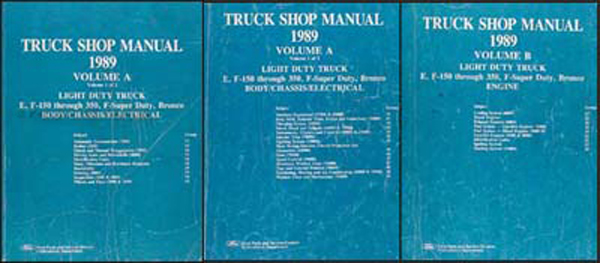
This manual set covers 1989 Ford truck models including F-Series models F-150, F-250, F-350, F-Super Duty, long and short beds, Super Cabs and Crew Cabs; full-size Bronco; E150, E250, E350, Econoline, Cargo Van, Club Wagon, and C-class Van-based motorhomes .
Volume A Body, Chassis Electrical 2 volumes
Volume B Engine

The story of how a Pan American Airways B-314 flying boat, caught in the South Pacific, made an unplanned flight around the world following the Japanese attack on Pearl Harbor on December 7, 1941. Flying in total secrecy and radio blackout, Captain Ford and his 10 man crew flew over 31,500 miles in six weeks, avoiding enemy action in their effort to return safely to the United States. An astounding feat in 1941!
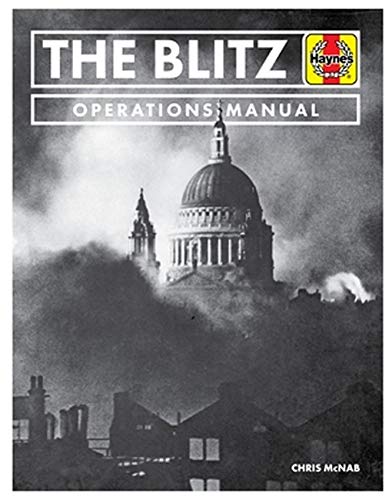
The Blitz was one of the gravest threats the UK has faced in its long history. From August 1940 to May 1941, the island nation was subjected to a relentless campaign of aerial bombing. German night raids gutted towns and cities, rendering thousands homeless (250,000 Londoners were homeless by October 1940 alone), killing 43,500 civilians and wounding 139,000 more.
That the Blitz did not bring the UK to its knees is due, in large part, to a vast response by Civil Defence services and the British people themselves. Preparations for enduring a strategic bombing campaign began in the mid-1930s with the development of the Air Raid Precautions (ARP) organisation, and by late 1938 more than 700,000 people were serving in ARP roles. During the war itself, some 1.5 million people took up duties in the Civil Defence (General) services, in roles ranging from air raid wardens to ambulance drivers to heavy rescue parties.

26 tips & tricks to improve your car * Quick and simple cleaning hacks * Use household objects … the family on long journeys (Concise Manuals)
Driving, owning, repairing and maintaining a car can be expensive, frustrating and time-consuming.
Car Hacks is here to explain how to use the things you have around your home to improve your car life, and balance your well-being in the process. From ensuring you never lose a screw when repairing your car, to spending less on fuel, and using cereal boxes to keep you car tidy, this book will open your eyes to the joys of car hacking.
Here are some favorite hacks you’ll find in Car Hacks:
- Interior hacks – Storage, cleaning, fixes, upgrades
- Exterior hacks – Bodywork, mechanical, quick repairs using everyday items
- Workshop hacks/Garage hacks – Working on your car
- Journey hacks – Easy storage solutions, luggage packing hacks, avoiding motorway food prices
- Driving hacks – Getting better fuel economy, avoiding motorway fuel prices, avoiding jams
- Family hacks – Entertaining kids (and adults!), simple tablet holders, ensuring everything stays charged, cable tidies, adding WiFi to your car
- Everyday hacks
- PLUS ‘Tool Hacks’ box outs placed throughout the book






















